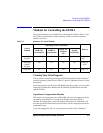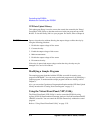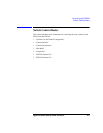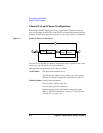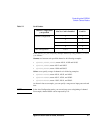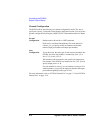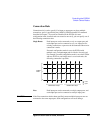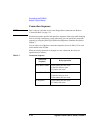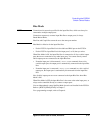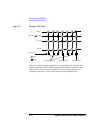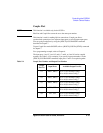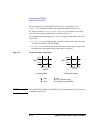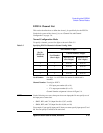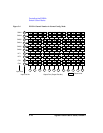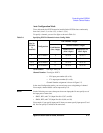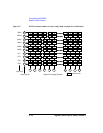
Agilent E5250A User’s Guide, Edition 9 5-11
Controlling the E5250A
Switch Control Basics
Bias Mode
NOTE Connection rule cannot be specified for the input Bias Port, which can always be
connected to multiple output ports.
Connection sequence (to connect input Bias Port to output ports) is always
Break-Before-Make.
Bias Port and Couple Port cannot be set to the same port number.
Bias Mode is effective for the input Bias Port:
• For the E5255A, input Bias Port is the dedicated BIAS port on the E5255A
• For the E5252A, input Bias Port is the input port (1 to 10) that you select.
When Bias Mode is ON, the input Bias Port is connected to all bias enabled output
ports that are not connected to any other input ports. You cannot directly control
which output ports are connected to the input Bias Port:
• If another input port is disconnected (:ROUT:OPEN command) from a bias
enabled output port, the output port is automatically connected to the input Bias
Port.
• If another input port is connected (:ROUT:CLOS command) to a bias enabled
output port, the output port is automatically disconnected from the input Bias
Port.
Bias disabled output ports are never connected to the input Bias Port when Bias
Mode is ON.
When Bias Mode is OFF, the input Bias Port is the same as the other input ports, so
relays can be controlled directly to connect to output ports.
You can independently control the Bias Mode for each card installed in the E5250A.
Refer to [:ROUTe]:BIAS[:STATe] in Chapter 7.
For a programming example, refer to Chapter 6.



